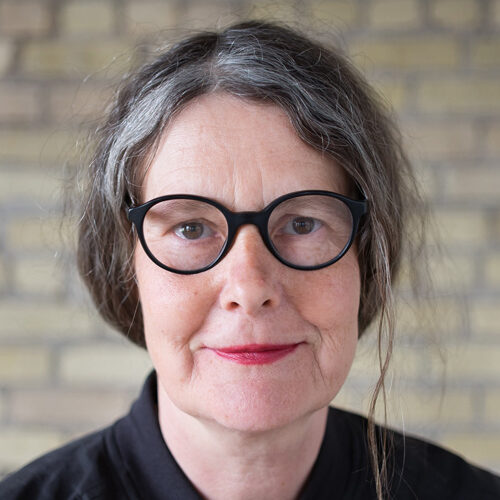About
About the Conference
The NCBDS’s origins reside in a small gathering entitled Beginnings. This gathering, held in 1972 at the University of Wisconsin, Milwaukee, and organized by Tim McGinty and Gerry Gast, brought together for the first time design educators to discuss introductory design education. Just over a decade later, after a second gathering held in 1983 at Cranbrook Academy, the first Beginning Design Conference was held in 1984 at Arizona State University. Since that conference in Arizona, the National Conference on the Beginning Design Student has been and continues to be the primary venue for discussion about the practice of and research into for beginning design.
Perhaps the most remarkable aspect of the NCBDS’s longevity is that the conference has no formal organizational structure. It has no president, no treasurer, and no dues. Instead, the conference has a dedicated community of beginning design educators whose interest in the educational challenges and attendant pedagogies, projects, and curricular strategies associated with beginning design propel the conference.
The Research Office for Novice Design Education is honored to host the National Conference on the Beginning Design Student website and past proceedings database. The Research Office is also pleased to present Past Papers of the National Conference of the Beginning Design Student, published in Batture, The Louisiana State University School of Architecture Journal. The issue is available here.
NCBDS 38 Conference Leadership Committee

Charlott Greub
Charlott Greub is an artist and registered architect in the European Union with 10 years of international professional experience. Currently she serves as Associate Professor of Architecture at North Dakota State University specialized in Urban Design and feasibility studies in metropolitan areas, a trans-disciplinary approach that addresses environmental, social and cultural factors within the city. Previously she taught architecture and art at the University of Utah in Salt Lake City, the Bauhaus University in Weimar, Germany and the Technical University Graz, Austria.

Jennifer Brandel, AIA, NCARB, NOMA
Jennifer Brandel is an Assistant Professor of Architecture in the School of Design, Architecture and Art at North Dakota State University where she teaches in the beginning and advanced design studios and lectures on speculative architecture and foundational design principles and processes. Prior to joining NDSU, she practiced professionally for 15 years with a focus in Healthcare architecture. Other topics of research and artistic making in ceramic and drawing include land use, human-nature relationships, regional indigenous architecture and healing space.

Regin Schwaen
Regin Schwaen is an associate professor of architecture at NDSU where he teaches and lectures in architecture, theory, and innovative concrete technology. He moved to the United States in 2000 after teaching architecture for 5 years at The Royal Academy in Copenhagen, Denmark. He received prizes and honorable mentions in domestic and international competitions and participated in curated exhibitions. Regin Schwaen studied as a visiting architecture student for two years at the Arts Academy of Düsseldorf, Germany, and began and completed his architecture education at Aarhus School of Architecture, Denmark. He has a huge curiosity for architecture, landscape, art, film, books, and travels vividly. His field of expertise are in the area of minimal structures in ferro-cement and casting concrete in fabric form. In 2020 he was granted an AIA ND professional award.

Susan Schaefer Kliman
Susan is a registered architect with over 30 years of comprehensive industry and academic experience. Her recent focus has been on the academic side, where she has overseen architecture and sustainability programs at both North Dakota State University and the University of the District of Columbia. She has taught a variety of undergraduate and graduate classes, including design studios, research methods, ethics and practice, and construction systems. Her own research interests include the mitigation of the urban heat island effect through appropriate building design, and the integration of landscape with structures. She maintains a small practice, Klimatic Architecture, specializing in high performance buildings. Susan is involved in several professional organizations, focusing on the training of emerging professionals; the regulation of practice; and the accreditation process for architecture programs. She has dedicated her career to the development of the next generation of architects, and has a long-standing commitment to equity and diversity in the profession.
Conference Directors

Susan Schaefer Kliman, PhD
Chair of the Department of Architecture

Michael Strand
Director of School of Design, Architecture and Arts (SODAA)

Dominic L. Fischer
Chair of the Department of Landscape Architecture
NDSU College of Arts, Humanities and Social Sciences (AHSS)

David Bertolini, PhD
Dean of the College AHSS

Michael Strand
Director of School of Design, Architecture and Arts (SODAA)

Susan Schaefer Kliman, PhD
Chair of the Department of Architecture
North Dakota State University
North Dakota State University came into existence in 1890 when it was first established through a land grant by the state of North Dakota as the North Dakota Agricultural College (NDAC). Thus, NDAC became the state’s Land Grant College just one year after North Dakota became a state.
Under the auspices of the Morrill Land Grant Act, the institution was tasked with the mission of providing educational opportunities and research services to the people of the northern Great Plains. It is also recognized that this Act provided each state with “public” and federal lands, which are traced back to the disposition of Indigenous lands. Existing within the context of a place considered public, state, and native, this location is a ground for investigation, dialogue, and revelation. The first offered courses were in the disciplines of Agriculture, Engineering/Mechanic Arts and Home Economics; a pharmacy program was later added; and eventually in 1914, courses in architecture were begun under the Mechanic Arts program. With an amendment to the state’s constitution in 1960, the school’s official name was changed from NDAC to North Dakota State University (NDSU). The North Dakota State University comes under the purview of the Chancellor of the North Dakota University System (NDUS), which includes eleven academic institutions in different locations across the state of North Dakota. NDSU and the entire NDUS are governed by the State Board of Higher Education (SBHE).
History and Description of the Architecture-Related Programs
The first set of architecture-related courses related to architecture were offered in 1914 by the North Dakota Agricultural College through the Department of Civil Engineering and Mechanic Arts; and in 1922, NDAC granted its first Bachelor of Architectural Engineering degree. Thus, from its inception through World War II and beyond, the NDSU architectural program has carried a strong engineering tilt. The centennial anniversary for its first architecture-related courses was celebrated by the Department of Architecture in 2014. Indeed, the department has remained focused on deepening and broadening its rich academic foundations and historical heritage.
A visiting committee of the NAAB undertook a tour of the school and its programs in 1969, thus resulting in initial NAAB accreditation for the five-year Bachelor of Architecture degree in 1971. Since then, the architecture program at NDSU has continued to receive NAAB’s re-accreditation. In 2005, the Bachelor of Architecture degree program was replaced with a subsuming Master of Architecture degree program. With the approval of the NAAB, the department began in 2006 to offer the new Master of Architecture degree program as the accredited professional degree and the first set of NDSU ‘M.Arch’ graduates receiving their degrees in the spring of 2007.
The Architecture Department broadened its scope in 1983 by joining with the Landscape Architecture program to become the Department of Architecture and Landscape Architecture. The NDSU Landscape Architecture program evolved between 1970 and 1980 as a joint venture between the departments of Horticulture and Architecture. As the landscape-architecture profession matured along with the growth of the academic landscape-architecture program, NDSU began to offer the Bachelor of Landscape Architecture as a full and substantive degree program with its first set of students graduating in 1988.
Beginning in 2004, NDSU launched a major expansion into the downtown area of Fargo with both Renaissance Hall and Klai Hall housing the departments of Architecture, Landscape Architecture as well as Visual Arts. This mini campus started in 2004 with the acquisition and renovation of the Northern School Supply building (now Renaissance Hall) at NP Avenue and 8th Street North in downtown Fargo. This building initially served as the home of NDSU’s Visual Arts program and also housed some sections of the architecture and landscape architecture programs. The remaining programs in architecture and landscape architecture were housed in the main campus in the Architecture Building and Ehly Hall.
The University facilitated a jurisdictional or disciplinary separation of the department of architecture from the College of Engineering and Architecture. This eventual detachment occurred in 2013 and became necessary as the Engineering departments had become more oriented towards research and less focused on the building sciences. Thus, the Department of Architecture was moved in 2013 to the College of Arts, Humanities and Social Sciences (AHSS).
NDSU School of Design, Architecture, and Art (SoDAA)
This AHSS umbrella offered the architecture department a more productive interdisciplinary integration with the broader AHSS focus on the arts, social sciences, communication, and community engagement. Further interdisciplinary devolution continued in 2021 with the new NDSU School of Design, Architecture and the Arts that now includes the department of Architecture, Landscape Architecture, and the Visual Arts. These Departments have programs in Architecture, Landscape Architecture, Graphic Design, Studio Practice and Arts education.
The Department of Architecture offers two main academic program, namely: the five-year professional course of study that leads to a Master-of-Architecture (M.Arch) degree and the four-year undergraduate pre-professional Bachelor of Science in Architecture degree. Similarly, the Department of Landscape Architecture offers two main academic programs, namely: the five-year professional course of study that leads to a Master of Landscape Architecture (MLA) degree and the four-year undergraduate pre-professional Bachelor of Science in Architecture degree.